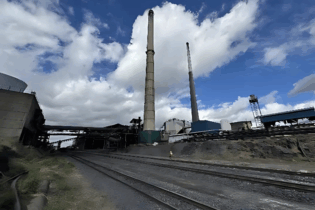Building confidence among building contractors, manufacturers of building materials and quantity surveyors in South Africa has increased marginally.
The immediate outlook, however, is that the local construction industry will continue to face numerous challenging, according to Saijil Singh, lead analyst at Coface South Africa. Even though some companies are reflecting a steady growth in orders, the industry is still hurting from a three-year battle between companies competing to win work for low-priced projects, says Singh. The increased supply of construction workers, and a lack of demand for construction projects, has resulted in increasing competition between firms, while margins are being squeezed to almost zero, he adds. “The value of recorded building plans passed was 4.5% lower during the first quarter of 2012 compared the last quarter of 2011,” Singh notes. “The biggest contributor to this decrease were plans for non-residential buildings which were down 22.8%. “As a result, some larger cement producers and brick manufacturing companies recently experienced strains in their working capital and cash flow,” he says. He continues: “The South African government has expressed plans to increase local infrastructure spending. “While this is expected to benefit the construction industry, the effects will only be seen in the long term, with little or no immediate effect. “The effects from this increase in government spend is only expected to reflect in the second half of 2013,” says the analyst. Singh notes that the country’s steel output fell 12.7% year-on-year to 6.7-million tons last year, while global production increased 6.8% to 1.53-billion tons.The country’s steel mills experienced significant downtime during 2011.
“A furnace failure at ArcelorMittal South Africa impacted an already subdued outlook for the company, which had to source steel from external sources to minimise the impact on its customers. “South Africa’s second-largest steel producer, Evraz Highveld, also experienced significant downtime while making improvements to its plant, adding to the national decline in yearly steel production in 2011,” Singh points out. While production was under strain, the largest current constraint in the steel industry, according to Singh, is lack of demand. The construction sector’s share of the demand for steel and engineering products is in excess of 60%, while the share of basic iron, steel and metal products (excluding machinery going into the construction sector), represents 33% of sales, he says. “With the construction sector struggling, the knock-on effect on the South African steel industry remains severe. Domestic demand for 2012 has been recovering, albeit tentatively. But if South African economic growth stagnates, the steel industry would be on the receiving end. “This could lead to local steel producers and exporters cutting back on investment plans,” says Singh He adds: “Steel prices are high and margins are squeezed to almost zero, leaving little room for South Africa steel companies to recover from further interruptions. “This challenging environment mainly affects small and medium-sized steel firms. Larger steel firms are well capitalised and have sufficient equity reserves to cope with the current climate. “As a result we are likely to see an increase in the number of liquidations in smaller-sized steel firms in South Africa,” Singh concludes. Source: business live






